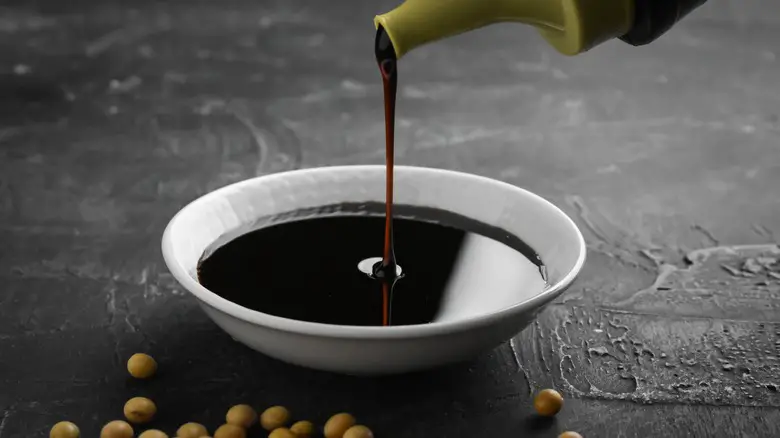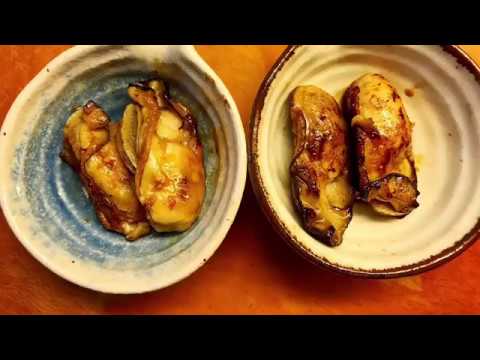Soy Sauce + Cooking Oil: What Happens When They Mix?
Soy sauce and cooking oil are two staple ingredients in many cuisines worldwide. However, have you ever wondered what happens when these two combine? Do they mix well? Are there any chemical reactions that occur when they come in contact with each other? In this article, we will take a deep dive into the science and properties of soy sauce and cooking oil, exploring how they react when mixed together.
The Science Behind Soy Sauce and Cooking Oil
Before we dive in, let’s discuss the underlying science behind these two ingredients. Soy sauce is a fermented liquid that is made from soybeans, wheat, salt, and water. During the fermentation process, the complex proteins and carbohydrates in the soybeans are broken down by beneficial bacteria and yeast into more simple compounds such as amino acids, peptides, and organic acids. This allows soy sauce to develop a rich umami flavor profile.
On the other hand, cooking oil is commonly made from plant-based sources such as olive, canola, or vegetable oils. These oils consist of different fatty acids that have varying melting points and chemical structures that can influence how they act when heated or mixed with other substances.
When soy sauce and cooking oil come in contact with each other, different chemical reactions can occur depending on the properties or amount of each ingredient used.
Properties of Soy Sauce and Cooking Oil
Soy Sauce
- Ingredients: Soybeans, wheat, salt, water
- Nutritional value: Low in calories but high in sodium
- Flavor profile: Rich umami taste often described as savory or meaty
- Types of soy sauce: Light (or thin), dark (or thick), sweet, and low-sodium
Cooking Oil
- Types of oil: Olive, canola, vegetable, coconut
- Smoke point: The temperature at which an oil starts to break down chemically and produce smoke. Example smoke point temperatures include olive oil (325-375°F), canola oil (400°F), and vegetable oil (400-450°F)
- Health benefits: Different oils offer different health benefits. For example, olive oil contains healthy fats that can help lower cholesterol levels. Coconut oil has medium-chain fatty acids that can help with weight loss or management.
Mixing Soy Sauce with Cooking Oil – What Happens?
Physical Reaction
When soy sauce is mixed with cooking oil, a few physical changes may occur. One consequence might be a change in the appearance of the mixture – it may darken slightly due to the color of the soy sauce. There may also be a slight change in the smell as the fragrance of the soy sauce mixes in with the aroma of the cooking oil. Overall, mixing soy sauce with cooking oil should not cause any substantial change in its texture or consistency.
Chemical Reaction
While there is no significant chemical reaction between soy sauce and cooking oils, there is an effect known as the Maillard reaction that occurs when protein-rich foods are combined with sugars or amino acids and heated together. This reaction usually results in more complex compounds and creates a variety of flavors ranging from sweet to nutty to savory or umami. Although soy sauce does contain amino acids that could react with sugar or carbohydrates in some oils, it is unlikely to occur at softer temperature ranges typically used when cooking.
Different Ways to Mix Soy Sauce and Cooking Oil
Recipes that Use Both Ingredients
One of the most common ways soy sauce and cooking oil are combined is through different recipes. Here are a few examples:
- Fried rice: This dish usually requires frying cooked rice with vegetables, eggs, and protein such as shrimp or chicken in oil. Afterward, soy sauce is added to provide flavor and color.
- Noodles: Various stir-fry noodle recipes require the browning of proteins such as beef or chicken in oil before adding mixed vegetables and cooked noodles. Soy sauce is then splashed on the mixture to coat all the ingredients evenly.
- Marinades: Soy sauce combined with oil (and often other spices such as garlic or ginger) can be used as a marinade for grilling meats such as steak or chicken.
Experimenting with Different Proportions
The amount of soy sauce and cooking oil needed for a recipe may vary depending on your taste preference or the type of dish you intend to create. Experiment with different ratios until you find one that works well for your palate.
Health Benefits and Risks
Health Benefits
Combining soy sauce and cooking oils can add more depth and complexity of flavors to your dishes. Additionally, some oils like olive oil contain healthy fats that can lower bad cholesterol levels if used appropriately in moderation.
Risks
If you are watching your sodium intake, it is crucial to be mindful of how much soy sauce you use in a recipe since it’s high in sodium content. Try experimenting with low-sodium soy sauces or alternative recipes that have low or no soy sauce content. Also, be careful about choosing the type of cooking oil – depending on the oil chosen, you may introduce more saturated fats into your diet than you intend.
Alternative Ingredients to Mix with Soy Sauce
If you don’t want to use cooking oil in your dishes, a few alternative ingredients can work well with soy sauce:
- Vinegar: Use rice or apple cider vinegar for dressings and marinades
- Lemon Juice: Add some tart and refreshing flavor to seafood or chicken dishes
- Mustard: Make a spicy spread for sandwiches or mix with honey to make a glaze for meats
Conclusion
Mixing soy sauce and cooking oil can enhance the flavor of different dishes, but it’s essential to be mindful of the type and amount used. Soy sauce has high sodium content while some oils could add more unhealthy saturated fat content if not used adequately. Overall, enjoy experimenting with these two ingredients in different proportions and various recipes to create unique flavors in your cuisine.
How does soy sauce react with cooking oil?
When soy sauce is mixed with cooking oil, it will not blend together but rather form two distinct layers. This is because they have different densities, with the oil being less dense than the soy sauce.
What happens to the taste of the mixture when soy sauce is added to cooking oil?
Adding soy sauce to cooking oil will give an umami flavor to the blend. Umami is known as the fifth taste, often described as savory or meaty. The richness of soy sauce can enhance the flavor profile of the resulting dish.
Can soy sauce and cooking oil be used together in recipes?
Mixing soy sauce and cooking oil can create a unique flavor combination that works well in certain dishes such as stir-fries or marinades. Soy sauce can help to tenderize meat and also add saltiness and depth to sauces.
Is there any specific type of cooking oil that should be used when mixing with soy sauce?
No specific type of cooking oil is required when mixing with soy sauce, any mild-flavored oil such as vegetable or canola oil will work. It’s important to note that the amount of soy sauce added should be balanced with the amount of oil used in the recipe to avoid overwhelming the dish with too much umami flavor.





